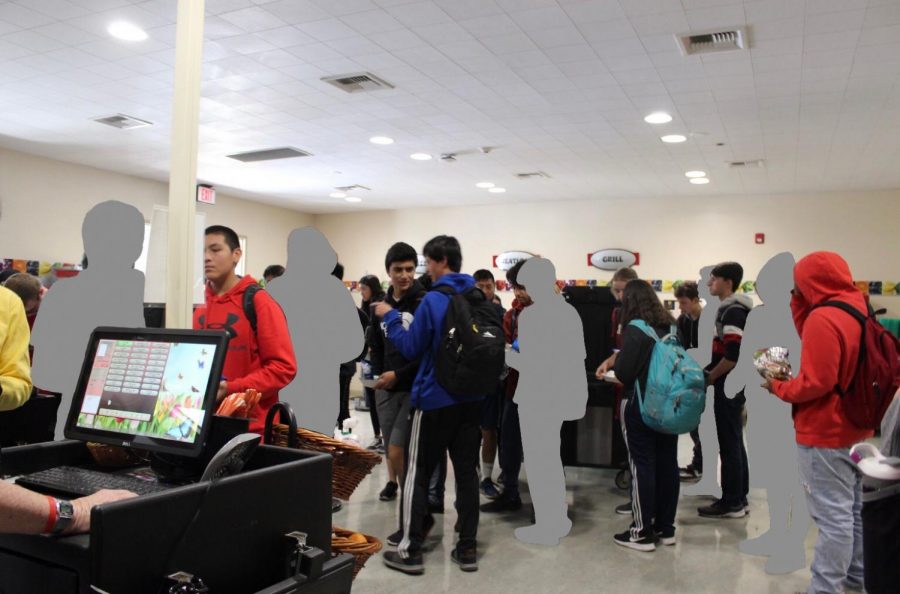Proposed national cuts to school meals may affect low-income students, families
Under a recent Trump administration proposal in July to cut the number of food stamp recipients, low-income students may no longer qualify for free and reduced-price school meals. The proposed cuts are designed to save money by eliminating the “loopholes” found in a flexible qualification system, which states had often used to bypass important eligibility guidelines, according to statements made by Secretary of Agriculture Sonny Perdue. The misuse of this safety net system allows for unqualified households to receive benefits reserved only for low-income students. U.S. Department of Agriculture (USDA) experts believe that roughly seven percent of children that will be affected by this change do not currently qualify for reduced-price meals.
The proposed cut could leave 3.1 million people nationwide without food stamp benefits, which will then deny around 500,000 children automatic eligibility for free school meals, according to the USDA. The USDA also predicts that the cut will impact 10% of Palo Alto Unified School District (PAUSD) students, 111,000 Santa Clara County students and two million Californian students.
While the cuts may pose a threat to low-income students, PAUSD has already taken certain measures to guarantee that no student goes hungry during the school day. The District Charge policy, for example, makes it possible for all students, regardless of eligibility status, to receive daily school meals, even when they have no money on them.
Roughly 3.1 million recipients under the USDA’s Supplemental Nutrition Assistance Program (SNAP) would no longer receive benefits. “PAUSD currently has 48 students that qualified for free or reduced priced meals based on the families qualifying for SNAP food stamps in California,” PAUSD Nutrition Services director Alva Spence said. Even so, these students could still receive daily meals under the District Charge policy.
Families who are eligible for free and reduced school meals will need gross incomes below 130% of the federal poverty level, or about $33,000 for a family of four. In California, a family of four earning about $50,000 can enroll in a food stamp program, given that 50 percent or more of their income is spent on child care and housing expenses. Families not receiving food stamps may still qualify for free school meals, but they would have to submit paperwork to apply, even though notices are not automatically sent. Families are also not informed of how to access these forms or what they may entail.
Spence became aware of the potential cuts to student eligibility for these meals and the potential changes to families’ access to SNAP and the California Food Stamp program in August. According to Spence, 6.5% of PAUSD students qualify for free meals and 2.5% qualify for reduced-price meals.
If these cuts were to pass, PAUSD’s current 779 students that qualify for free meals and 296 students that qualify for reduced-price meals will be affected.
PAUSD, though, must follow the USDA eligibility guidelines in order to grant free breakfasts and lunches to its students. “The USDA guidelines are updated annually and are based on the federal income poverty guidelines and stated by household size,” Spence said. “The guidelines are to determine eligibility for free and reduced- price meals and free milk, in accordance with applicable program rules.” So, Spence believes that these proposed cuts will not significantly impact or limit the food service budget allotted to PAUSD for school meals.
Palo Alto Parent-Teacher Association member and Gunn parent Nancy Krop expresses her concern over the recent proposed cuts. “I assume [the federal government] is looking to save money by making these cuts, but my response is that our budgets are a statement of our priorities. Yet, at the same time, the government is simultaneously increasing tax write-offs for yachts,” Krop said.“Why are we proposing to cut school meals for children? You can’t have a good answer to that question.”
In a past attempt to raise awareness of these cuts, Krop hoped that students, no matter their individual stances, would use social media to their advantage to bring about change. “We need everybody to speak up,” Krop said.
Your donation will support the student journalists of Henry M. Gunn High School. Your contribution will allow us to purchase equipment and cover our annual website hosting costs.


